[English] 日本語
 Yorodumi
Yorodumi- PDB-7e88: Crystal structure of the SARS-CoV-2 S RBD in complex with BD-515 Fab -
+ Open data
Open data
- Basic information
Basic information
| Entry | Database: PDB / ID: 7.0E+88 | ||||||
|---|---|---|---|---|---|---|---|
| Title | Crystal structure of the SARS-CoV-2 S RBD in complex with BD-515 Fab | ||||||
 Components Components |
| ||||||
 Keywords Keywords | VIRAL PROTEIN / IMMUNE SYSTEM / SARS-CoV-2 / Antibody | ||||||
| Function / homology |  Function and homology information Function and homology informationsymbiont-mediated disruption of host tissue / Maturation of spike protein / Translation of Structural Proteins / Virion Assembly and Release / host cell surface / host extracellular space / viral translation / symbiont-mediated-mediated suppression of host tetherin activity / Induction of Cell-Cell Fusion / structural constituent of virion ...symbiont-mediated disruption of host tissue / Maturation of spike protein / Translation of Structural Proteins / Virion Assembly and Release / host cell surface / host extracellular space / viral translation / symbiont-mediated-mediated suppression of host tetherin activity / Induction of Cell-Cell Fusion / structural constituent of virion / membrane fusion / entry receptor-mediated virion attachment to host cell / Attachment and Entry / host cell endoplasmic reticulum-Golgi intermediate compartment membrane / positive regulation of viral entry into host cell / receptor-mediated virion attachment to host cell / host cell surface receptor binding / symbiont-mediated suppression of host innate immune response / receptor ligand activity / endocytosis involved in viral entry into host cell / fusion of virus membrane with host plasma membrane / fusion of virus membrane with host endosome membrane / viral envelope / symbiont entry into host cell / virion attachment to host cell / SARS-CoV-2 activates/modulates innate and adaptive immune responses / host cell plasma membrane / virion membrane / identical protein binding / membrane / plasma membrane Similarity search - Function | ||||||
| Biological species |  Homo sapiens (human) Homo sapiens (human) | ||||||
| Method |  X-RAY DIFFRACTION / X-RAY DIFFRACTION /  SYNCHROTRON / SYNCHROTRON /  MOLECULAR REPLACEMENT / Resolution: 3.14 Å MOLECULAR REPLACEMENT / Resolution: 3.14 Å | ||||||
 Authors Authors | Gao, C. / Wei, Y. / Xiao, J. | ||||||
 Citation Citation |  Journal: Cell Res / Year: 2021 Journal: Cell Res / Year: 2021Title: Humoral immune response to circulating SARS-CoV-2 variants elicited by inactivated and RBD-subunit vaccines. Authors: Yunlong Cao / Ayijiang Yisimayi / Yali Bai / Weijin Huang / Xiaofeng Li / Zhiying Zhang / Tianjiao Yuan / Ran An / Jing Wang / Tianhe Xiao / Shuo Du / Wenping Ma / Liyang Song / Yongzheng Li ...Authors: Yunlong Cao / Ayijiang Yisimayi / Yali Bai / Weijin Huang / Xiaofeng Li / Zhiying Zhang / Tianjiao Yuan / Ran An / Jing Wang / Tianhe Xiao / Shuo Du / Wenping Ma / Liyang Song / Yongzheng Li / Xiang Li / Weiliang Song / Jiajing Wu / Shuo Liu / Xuemei Li / Yonghong Zhang / Bin Su / Xianghua Guo / Yangyang Wei / Chuanping Gao / Nana Zhang / Yifei Zhang / Yang Dou / Xiaoyu Xu / Rui Shi / Bai Lu / Ronghua Jin / Yingmin Ma / Chengfeng Qin / Youchun Wang / Yingmei Feng / Junyu Xiao / Xiaoliang Sunney Xie /  Abstract: SARS-CoV-2 variants could induce immune escape by mutations on the receptor-binding domain (RBD) and N-terminal domain (NTD). Here we report the humoral immune response to circulating SARS-CoV-2 ...SARS-CoV-2 variants could induce immune escape by mutations on the receptor-binding domain (RBD) and N-terminal domain (NTD). Here we report the humoral immune response to circulating SARS-CoV-2 variants, such as 501Y.V2 (B.1.351), of the plasma and neutralizing antibodies (NAbs) elicited by CoronaVac (inactivated vaccine), ZF2001 (RBD-subunit vaccine) and natural infection. Among 86 potent NAbs identified by high-throughput single-cell VDJ sequencing of peripheral blood mononuclear cells from vaccinees and convalescents, near half anti-RBD NAbs showed major neutralization reductions against the K417N/E484K/N501Y mutation combination, with E484K being the dominant cause. VH3-53/VH3-66 recurrent antibodies respond differently to RBD variants, and K417N compromises the majority of neutralizing activity through reduced polar contacts with complementarity determining regions. In contrast, the 242-244 deletion (242-244Δ) would abolish most neutralization activity of anti-NTD NAbs by interrupting the conformation of NTD antigenic supersite, indicating a much less diversity of anti-NTD NAbs than anti-RBD NAbs. Plasma of convalescents and CoronaVac vaccinees displayed comparable neutralization reductions against pseudo- and authentic 501Y.V2 variants, mainly caused by E484K/N501Y and 242-244Δ, with the effects being additive. Importantly, RBD-subunit vaccinees exhibit markedly higher tolerance to 501Y.V2 than convalescents, since the elicited anti-RBD NAbs display a high diversity and are unaffected by NTD mutations. Moreover, an extended gap between the third and second doses of ZF2001 leads to better neutralizing activity and tolerance to 501Y.V2 than the standard three-dose administration. Together, these results suggest that the deployment of RBD-vaccines, through a third-dose boost, may be ideal for combating SARS-CoV-2 variants when necessary, especially for those carrying mutations that disrupt the NTD supersite. | ||||||
| History |
|
- Structure visualization
Structure visualization
| Structure viewer | Molecule:  Molmil Molmil Jmol/JSmol Jmol/JSmol |
|---|
- Downloads & links
Downloads & links
- Download
Download
| PDBx/mmCIF format |  7e88.cif.gz 7e88.cif.gz | 918.8 KB | Display |  PDBx/mmCIF format PDBx/mmCIF format |
|---|---|---|---|---|
| PDB format |  pdb7e88.ent.gz pdb7e88.ent.gz | 774 KB | Display |  PDB format PDB format |
| PDBx/mmJSON format |  7e88.json.gz 7e88.json.gz | Tree view |  PDBx/mmJSON format PDBx/mmJSON format | |
| Others |  Other downloads Other downloads |
-Validation report
| Summary document |  7e88_validation.pdf.gz 7e88_validation.pdf.gz | 514.1 KB | Display |  wwPDB validaton report wwPDB validaton report |
|---|---|---|---|---|
| Full document |  7e88_full_validation.pdf.gz 7e88_full_validation.pdf.gz | 552.7 KB | Display | |
| Data in XML |  7e88_validation.xml.gz 7e88_validation.xml.gz | 83.4 KB | Display | |
| Data in CIF |  7e88_validation.cif.gz 7e88_validation.cif.gz | 113.8 KB | Display | |
| Arichive directory |  https://data.pdbj.org/pub/pdb/validation_reports/e8/7e88 https://data.pdbj.org/pub/pdb/validation_reports/e8/7e88 ftp://data.pdbj.org/pub/pdb/validation_reports/e8/7e88 ftp://data.pdbj.org/pub/pdb/validation_reports/e8/7e88 | HTTPS FTP |
-Related structure data
| Related structure data | 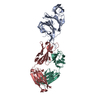 7e7xC 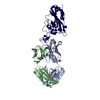 7e7yC 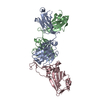 7e86C  7e8cC  7e8fC  7ch4S S: Starting model for refinement C: citing same article ( |
|---|---|
| Similar structure data |
- Links
Links
- Assembly
Assembly
| Deposited unit | 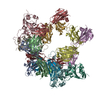
| |||||||||||||||||||||||||||||||||||||||||||||||||||||||||||||||||||||||||||||||||||||||||||||||||||||||||||||||||||||||||||||||
|---|---|---|---|---|---|---|---|---|---|---|---|---|---|---|---|---|---|---|---|---|---|---|---|---|---|---|---|---|---|---|---|---|---|---|---|---|---|---|---|---|---|---|---|---|---|---|---|---|---|---|---|---|---|---|---|---|---|---|---|---|---|---|---|---|---|---|---|---|---|---|---|---|---|---|---|---|---|---|---|---|---|---|---|---|---|---|---|---|---|---|---|---|---|---|---|---|---|---|---|---|---|---|---|---|---|---|---|---|---|---|---|---|---|---|---|---|---|---|---|---|---|---|---|---|---|---|---|---|
| 1 | 
| |||||||||||||||||||||||||||||||||||||||||||||||||||||||||||||||||||||||||||||||||||||||||||||||||||||||||||||||||||||||||||||||
| 2 | 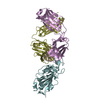
| |||||||||||||||||||||||||||||||||||||||||||||||||||||||||||||||||||||||||||||||||||||||||||||||||||||||||||||||||||||||||||||||
| 3 | 
| |||||||||||||||||||||||||||||||||||||||||||||||||||||||||||||||||||||||||||||||||||||||||||||||||||||||||||||||||||||||||||||||
| 4 | 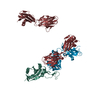
| |||||||||||||||||||||||||||||||||||||||||||||||||||||||||||||||||||||||||||||||||||||||||||||||||||||||||||||||||||||||||||||||
| Unit cell |
| |||||||||||||||||||||||||||||||||||||||||||||||||||||||||||||||||||||||||||||||||||||||||||||||||||||||||||||||||||||||||||||||
| Noncrystallographic symmetry (NCS) | NCS domain:
NCS domain segments:
|
 Movie
Movie Controller
Controller





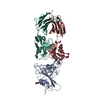



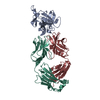
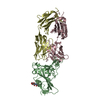
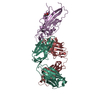
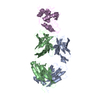
 PDBj
PDBj



